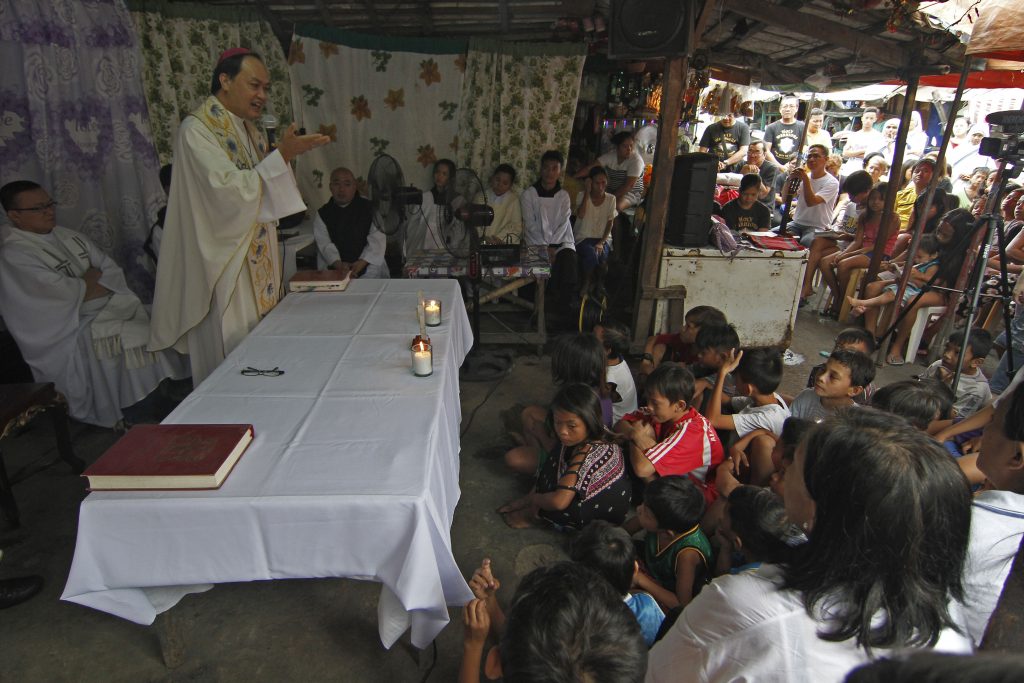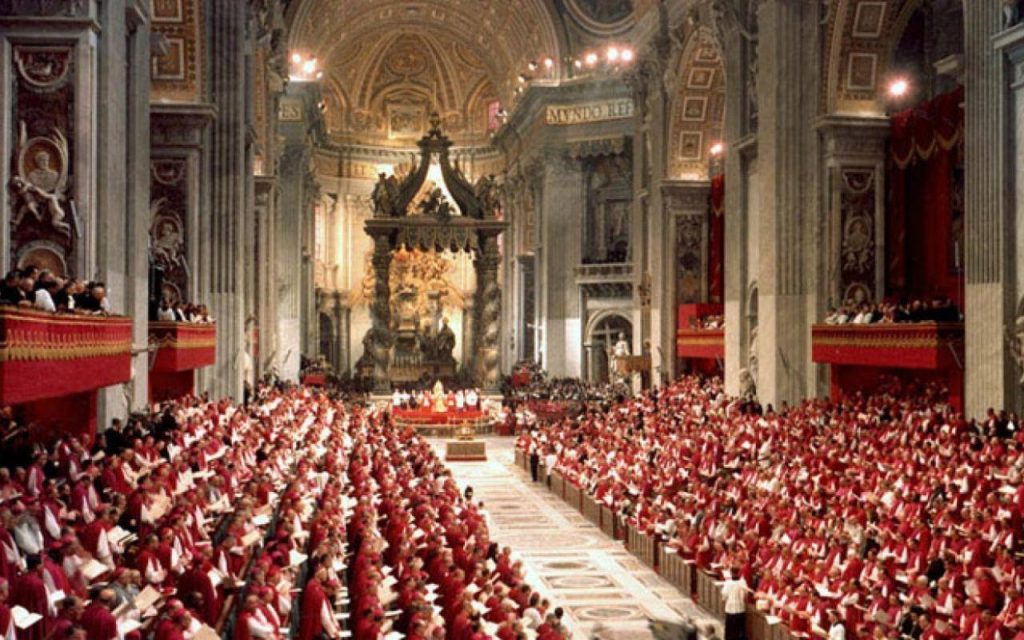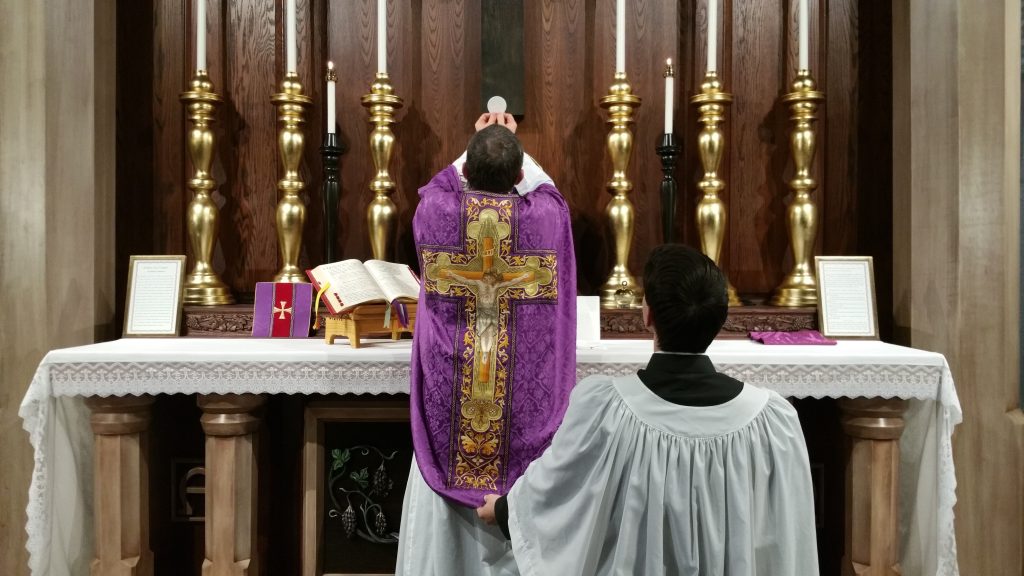
(From the time I published this last year, one important document from the Vatican came out: “Traditiones Custodes.“ Pope Francis reinforces what I have been talking about against the traditionalists who disagree with me here.)
To be honest, we need a semester or two in order to be able to teach Vatican II and almost the same amount of time to thresh out the contemporary debates about them. What I can do in a short piece is to give a mere outline of the crucial positions Vatican II has taken and the challenges these pose to the Church of the present day.
The 16 documents are divided into three groups in an order of importance: constitutions, decrees and declarations.
I will only deal with the constitutions and see their practical relevance to our Christian lives: “Sacrosanctum Concilium” (on the liturgy); “Dei Verbum” (on revelation); “Lumen Gentium” (on the identity of the Church); “Gaudium et Spes” (on the Church and the Modern World).
In this short article, let me start with the issues on liturgy. The first document to be approved by Vatican II was “Sacrosanctum Concilium.” One of its controversial concepts is the “full, conscious and active participation” in the liturgy.
“Full, conscious and active participation” became a slogan for Vatican II liturgical reform. The phrase appeared 16 times in the whole document — the most crucial is Sacrosanctum Concilium no. 48: “Christian believers should not be there as strangers and spectators… they should take part in the sacred action, actively, fully aware, and devoutly.”
This move was a reaction to the Latin Tridentine liturgy, which was monopolized by the priest while the lay people are also busy with their own little devotions, rosaries and novenas. In a curt description, a theologian said, in the medieval church, “the lay people kneel down and pray, after which, they sit down and pay.”
But “active participation” did not just fall from the heavens during the Vatican II sessions. Since the early 1900s, a growing liturgical movement was already in place all over Europe. For instance, in 1909, a Benedictine monk in Leuven, Belgium — Dom Lambert Beauduin, also a chaplain to the workers — already insisted to do away with Latin language in the Mass. That early, he proposed some revolutionary things: the dialogical response of the assembly; communion with both bread and wine; communion by the hand (while standing) while the policy to take it by the tongue and kneeling. This was still 50 years before Vatican II!
That is why when “full, conscious and active participation” was proposed in Vatican II, it was not new to many bishops. It was already in the air! Sacrosanctum Concilium was in fact the first document approved by the Council (4 December 1963). And the rest is history.
But this did not pass without fierce opposition, some of them funny ones. One Cardinal Godfrey of England did not like to share the chalice with the people in the name of hygiene. He does not particularly like women with lipstick sharing it with him (Rynne 1963, 115).
Some are more dramatic: Cardinal Ottaviani — the Secretary of the Holy Office — rose in order to oppose the changes favored by so many bishops on the floor. He exclaimed: “Are these fathers fanning a revolution?” Then he recited his litany of opposition to the liturgical reform. His intervention went way beyond the 10-minute rule and the moderator had to stop him. It was seconded by another bishop and the microphone had to be passed to another speaker. Everyone applauded. And Cardinal Ottaviani boycotted the Council for two weeks! In the end, the document was approved with resounding majority — 2,147 against four votes.
The young theologian Edward Schillebeeckx who was also a “peritus” of the Council gave a succinct description on what happened: “The fundamental gain of this Constitution (SC) is that it broke with the clergy’s monopoly of the liturgy. Whereas it was formerly the priest’s affair, with the faithful no more than a clientele, the council regards not only the priest but the entire Christian community, God’s people, as the subject of the liturgical celebration” (Schillebeeckx 1967, 28).
The young Joseph Ratzinger, who was also there as a theologian-expert, praised this development in his early commentaries: “The wall of Latinity had to be breached if the liturgy were again to function either as proclamation or as invitation to prayer…. If we view the Council’s initiatives for liturgical reform in their historical context, then we may well consider them a basic reversal”(Ratzinger 1966, 87-88).

The recounting of this history is important because, in recent years, there has been vigorous reinterpretation of the meaning of “active participation” from the “hermeneutics of reform” group and some influential members of the hierarchy.
They say that “active participation” is not so much communal celebration, external gestures or verbal response in liturgy. It is about the “internal union with Christ” — the High Priest — in the liturgy (Ratzinger, 2000). Facing the assembly — once a revolutionary act in Vatican II in order to bring back the sense of God’s people in the liturgy — is now seen as a cause of distraction.
Latin in liturgy is again on the rise after the issuance of the document entitled “Summorum Pontificum,” which actually brings back the Tridentine Mass, facing the altar or facing the East (ad orientem), with all those old guitar-shaped chasubles and black sotanas of priests coming back in vogue, and other peculiar developments of the liturgy. In fact, one diocese in the Philippines decreed that the priests in the whole diocese should say Mass with his back on the people, using those Latin greetings. Some millennials are also lured by its “newness” and become quite curious.
Now you may ask what has “Sancrosanctum Concilium” got to do with my life, as an ordinary Christian? A group of sisters are wondering why bring in the Latin Mass again — with the priest facing the altar, all those big candles, Gregorian chants, small altar boys donning black cassocks — all mimicking Vatican papal liturgies in the remotest towns and barangays of this very warm country. One said: “Dati nakatalikod; tapos pinaharap; ngayon pinatalikod uli! Ano ba talaga Kuya?”
The experience of the new English translation of the Mass (“and with your Spirit” debate in the not so recent past) that renders a word-for-word translation from Latin already prevents the implementation of “legitimate variations” and “radical adaptations” of the liturgy that Vatican II has once envisioned (SC, 37-40) in the spirit of inculturation. “Dynamic equivalence” (culturally appropriating the original message in a new culture) should have been the first step in the journey of rerooting Christianity into our local cultures. Now, we are back to square one.

With the recent developments, where has all the inculturation gone? One simple lay woman texted me and asked: “I do not understand the priest at all when he chanted in Latin. How can I participate? Are we back to soloist ministers?” After 500 years of Christianity, we can ask, how inculturated is the faith in the Philippine soil?
Moreover, the hermeneutics of reform wants us to emphasize “reverential silence” in the liturgy because active participation is internal not external. This group is afraid that the Mass becomes a show because the priest is taking the center stage. It is feared that we might forget God in the process who should be the center of it all.
I am celebrating Masses in the small chapels around the Payatas dump every Sunday. Even with the roaring of dump trucks and crying children around, people there do not have a problem with reverential silence. They pause, keep quiet, close their eyes when the liturgy invites them to. In fact, “reverential silence” abounds in their daily lives — in a helpless mother watching her dead child in the coffin not being able to explain why; in a scavenger-father who walks up the trash heap asking God to help him go through each difficult day; in a widow in front of the coffin of her husband and could not understand why the police just killed him. In these moments, all they have is reverential silence.
But in the Sunday liturgy, they also long for an upbeat spirit, a little laugh during the homily, an assuring hug from one’s neighbor during the sign of peace; a clapping of hands while singing or after someone has shared a touching story; dancing children during the Gloria; a gospel well explained to make sense of the deafening and oftentimes painful silence during the week.
If we go back to the debates of Vatican II, these situations are what the Council fathers had in mind when they instituted the liturgical reform — and earlier than that, in Lambert Beauduin’s liturgical celebration among factory workers.
The people long for a liturgy that speaks their language, that articulates their fears, celebrates their joys… in a language that is accessible to them, in songs close to their hearts. They want those everyday experiences to be all gathered and consecrated in God’s altar, in those small chapels in far-away mountains or in small spaces near their shanties. They long for a liturgy that blesses and consecrates the “joys and hopes” (gaudium et spes), the fears and pains coming the rough grounds of their lives.
Maybe the traditionalists and the proponents of the “hermeneutics of reform” come from a different social location. Maybe.
Father Daniel Franklin Pilario, C.M. is a theologian, professor, and pastor of an urban poor community in the outskirts of the Philippine capital. He is also Vincentian Chair for Social Justice at St. John’s University in New York.
Source: Licas Philippines
0 Comments